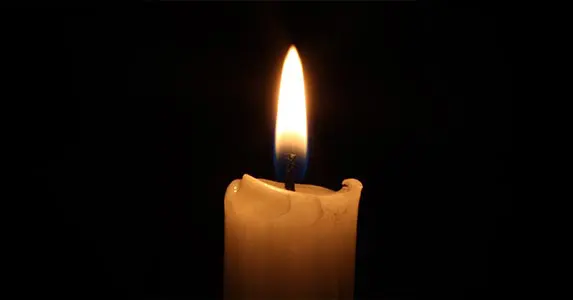History and tradition of candles, or the evolution of candles through the centuries

Candles play an extremely important role in human history. From simple light sources to spiritual and decorative symbols, their meaning has evolved over the centuries. In this article, we'll take a look at the fascinating history of candles, their evolution and various uses over the centuries.
The history of candles is an important part of human history
The first candles appeared in ancient civilizations. The earliest known candles come from Egypt, about 3,000 years p.n.e. There they used animal tallow and rushes as wicks. The Egyptians, Greeks and Romans used candles made of beeswax, which was more expensive and luxurious than tallow.
In ancient China and Japan candles were made from wax derived from insects (Ericerus Pela) and plant seeds. The Chinese used m.in. whale oil, while the Japanese produced candles from wood wax.
During the Middle Ages in Europe, tallow remained the most common material for making candles. It was cheap and readily available, but it had its drawbacks, such as an unpleasant odor and smokiness. It was also during this period that the use of beeswax candles, especially in churches and homes of rich people. Beeswax candles were expensive, but they burned cleanly, without smoke or odor, and gave off a pleasant aroma of honey.
In medieval Europe, candles had great religious significance. Catholic churches used them in the liturgy, and the candles became symbols of prayer, purification and spiritual light. Many Christian saints are associated with the symbolism of candles, and their use in religious ceremonies has become widespread.
The Renaissance brought with it technological advances that affected the production of candles. Modern methods of sebum purification were invented, which greatly improved the quality of candles. In the 17th century, Europe began producing candles made from whale wax, which was more available and cheaper than beeswax, while burning cleaner than tallow.
In the 18th century, the candle industry began to develop on a larger scale. Candle production has become more mechanized, allowing more candles to be produced in less time. The invention of the mold for casting candles allowed the production of uniform candles, which greatly improved their quality and aesthetics.
Industrial Revolution brought significant changes in candle production. In the 19th century, the discovery of stearin, which is a by-product of the refining of animal fats. Stearin was cheaper and burned cleanly, making it a popular material for candles.
In the mid-19th century, the discovery of paraffin, a substance made from petroleum. Paraffin quickly replaced tallow and stearin as the main material for candle making due to its low price. Paraffin is still widely used in candle making today.
In the 19th and 20th centuries, candles began to play a greater decorative and symbolic role. With the invention of kerosene lamps and electricity, candles lost their dominant role as a source of light, but gained new importance in culture. Candles have become a symbol of romance, meditation, prayer and intimacy.
Candles in modern times
Today's candle market is dominated by scented candles, which became popular in the second half of the 20th century. Scented candles offer not only light, but also a variety of aromas that can affect the mood and atmosphere in your Home. Modern scented candles available at Candle World are often made from natural waxes, such as soy wax, coconut wax or palm wax, which are more environmentally friendly than paraffin wax.
In response to growing environmental awareness, many companies make candles from natural, biodegradable materials. Soy wax, which is a renewable source, has become a popular choice. Soy wax candles burn longer and cleaner, and their production has less impact on the environment.
Traditions and rituals, or the importance of candles in religion
Candles play a key role in Christian liturgy. During Easter, The Paschal Candle is lit as a symbol of Christ's resurrection. During Advent, Advent wreaths are lit to count down the weeks until Christmas.
In Judaism, candles are an integral part of many holidays and rituals. During Hanukkah, festival of light, a menorah with eight arms is lit, symbolizing the miracle associated with the oil in the Jerusalem Temple. Shabbat is also ushered in with the lighting of candles on Friday evening, marking the beginning of a day of rest.
In Hinduism, candles and oil lamps are used during numerous holidays, such as Diwali, known as the Festival of Lights. Diwali symbolizes the victory of good over evil, and the lit diyas (olive lamps) illuminate homes and streets, bringing joy and prosperity.
Candles in secular rites and ceremonies
Birthday candles are a popular tradition around the world. Lighting candles on a birthday cake and blowing them out after saying a wish is a symbolic act to bring good luck and prosperity for the coming year.
In many cultures, candles are lit on the graves of the dead as an expression of remembrance and respect. On the Day of the Dead in Mexico, candles are part ofrendas - altars built for the dead to show them the way back to the world of the living.
The history of candles is rich and varied, full of meanings and traditions that have survived the centuries. From simple light sources to elegant decorations and symbolic objects, candles have evolved with technological and cultural advances. Today, despite the development of lighting technology, candles still hold a special place in our hearts and homes, offering not only light, but also warmth, fragrance and atmosphere. Whether used for practical, religious or decorative purposes, candles remain an integral part of human culture and tradition.
